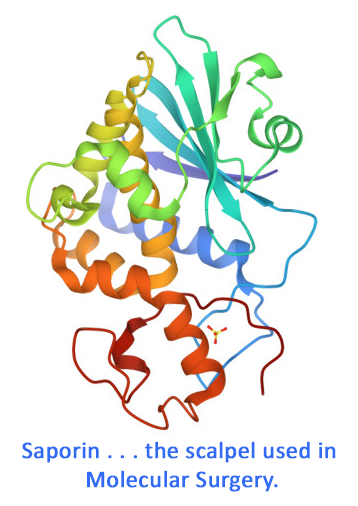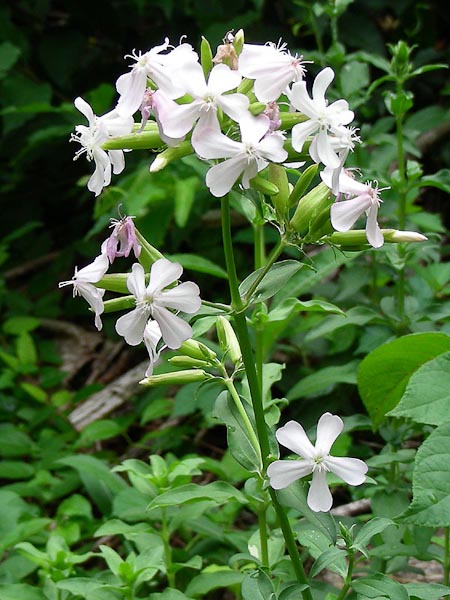Saporin is obtained from the seeds of the Soapwort plant (Saponaria officinalis), a plant that grows wildly in Britain and other parts of Europe. Saporin is a plant enzyme with N-glycosidase activity that depurinates a specific nucleotide in the ribosomal RNA 28S, thus irreversibly blocking protein synthesis. It belongs to the well-characterized family of ribosome-inactivating proteins (RIPs). There are two types of RIPs: type I, which are much less cytotoxic due to the lack of the B chain and type II, which are distinguished from type I RIPs by the presence of the B chain and their ability to enter cells on their own. However, type I RIPs can still be internalized by fluid-phase endocytosis. Upon internalization, the ribosomes are inactivated, resulting in cell death. The bond between streptavidin and biotin is rapid and essentially non-reversible, unaffected by most extremes of pH, organic solvents, and denaturing reagents. It is the strongest known noncovalent biological interaction (Ka = 1015 M-1) between protein and ligand.
This conjugate recognizes streptavidin conjugates. MonoBiotin-ZAP (BT-ZAP) is a chemical conjugate of saporin labeled with biotin in a 1:1 chemically-determined average molar ratio. MonoBiotin-ZAP uses YOUR streptavidinylated targeting agent to target and eliminate cells.
keywords: saporin, saponaria officinalis, plant enzyme, RIP, ribosome-inactivating protein, RIP I, internalization, cell death, biotin, streptavidin, secondary, ZAP, avidin, conjugate
Insights into the mechanism of cell death induced by saporin delivered into cancer cells by an antibody fusion protein targeting the transferrin receptor 1.
Daniels-Wells TR, Helguera G, Rodriguez JA, Leoh LS, Erb MA, Diamante G, Casero D, Pellegrini M, Martinez-Maza O, Penichet ML (2013) Insights into the mechanism of cell death induced by saporin delivered into cancer cells by an antibody fusion protein targeting the transferrin receptor 1. Toxicol In Vitro 27(1):220-231. doi: 10.1016/j.tiv.2012.10.006
Summary: The antibody-avidin fusion protein ch128.1Av has been shown to target the human transferrin receptor 1 (TfR1) and kill malignant B cells by blocking the use of iron. Combination of this construct with a mono-biotinylated saporin custom conjugate produces an iron-independent toxicity to TfR1-expressing cells, even those that are resistant to ch128.1Av alone. The saporin-containing conjugate induces a transcriptional response consistent with oxidative stress and DNA damage. The data also show that the saporin conjugate is not toxic to human hematopoeietic stem cells.
Usage: An antibody-avidin fusion protein (ch128.1Av) was mixed with MonoBiotin-ZAP to make an immunotoxin that targets the human transferrin receptor 1 (TfR1).
Related Products: MonoBiotin-ZAP (Cat. #BT-ZAP), Custom Conjugates
Selective targeting of microglia by quantum dots.
Minami SS, Sun B, Popat K, Kauppinen T, Pleiss M, Zhou Y, Ward ME, Floreanig P, Mucke L, Desai T, Gan L ( 2012 ) Selective targeting of microglia by quantum dots. J Neuroinflammation 9(1):22 . doi: 10.1186/1742-2094-9-22
Related Products: MonoBiotin-ZAP (Cat. #BT-ZAP)
browse all references for this product | back to top



Reviews
There are no reviews yet.